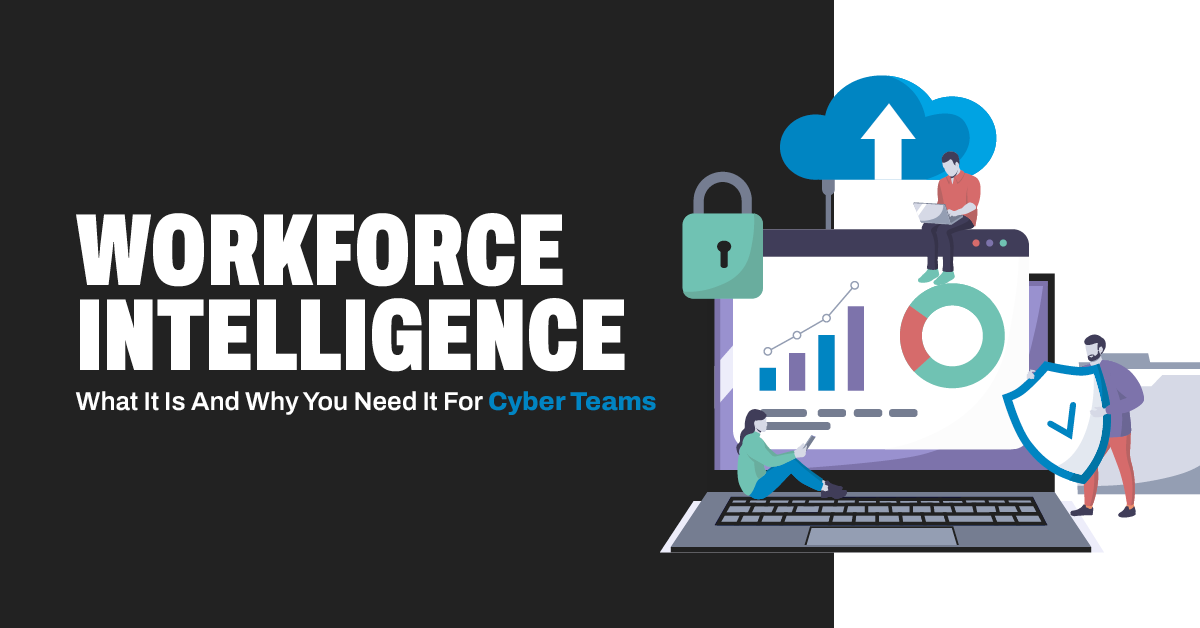With advancements in automation and technology, economic fluctuations, and an expanding threat landscape, security leaders of resilient organizations must have three things in sync: their people, processes, and technology. While industry reports and studies have shown that leaders understand the need for upskilling talent, many indicate this is still one of their biggest struggles.
There are a growing number of human capital management or workforce planning tools that aim to help align the general workforce with organizational strategies. Still, there are limited options that tailor to cybersecurity. Today’s security leaders need a tool that provides actionable data and intelligence for sustainable cyber talent development, accelerates skills at the speed of technology, and achieves business resilience.
Workforce Challenges
Just as you regularly evaluate and upgrade technology to improve performance and create efficiency, the same approach must be applied to your people. What happens, however, is that most organizations continue to hire and develop cyber talent at the individual level. What this looks like:
- Source practitioners with years of experience and certifications, aka star performers
- Employers pay a premium for training based on personal interests or skill sets
- In 1-2 years, those practitioners leave for better pay or career opportunities
- Rinse and repeat
This individualized approach creates disproportionate workforce capabilities and perpetuates the growing cybersecurity skills gap. Leaders need a collective, holistic approach to cyber workforce development that optimizes the skills and capabilities of all their employees, not just the star performers.
A talent development strategy that can accurately define cybersecurity job roles, the skill expectations to fill those roles, and training plans to fulfill those expectations can drive efforts toward building and maintaining a high-functioning, resilient cyber workforce for the long term.
Enter Workforce Intelligence
There are multiple definitions for intelligence, but here is how it's defined in its simplest form:
INTELLIGENCE = the ability to gather, process and analyze data & information in order to glean insights that aid decision-making actions.
The term intelligence is associated most commonly with both the cybersecurity industry and the public sector. Cyber threat intelligence is detailed information on cyber threats and threat actors gathered through extensive collection, evaluation, and analysis to help mitigate potential attacks and harmful events. Similarly, in government, intelligence is information gathered within or outside the U.S. that involves threats and any other potentially harmful matter on the U.S. national or homeland security.
Intelligence, at the individual level, is defined as one’s ability to accumulate knowledge and skills for personal improvement or otherwise. But what does it mean when applied to the collective—your cyber workforce—and as a leader, what does this information allow you to do?
Workforce Intelligence is a data-driven approach to assessing the health and maturity of your team’s capabilities to help make more strategic talent development decisions. Using this method that garners insights from internal skills and market data can inform workforce planning and answer critical questions such as, “What are my team’s current skills gaps?” and “What is the most effective way to help fill those gaps?”
The Purpose of Workforce Intelligence
Workforce Intelligence provides vital insights to use as a decision-making tool before and after investing in talent development for your cyber workforce.
Before Investing: Understand the current state of your workforce to help optimize hiring, training, and upskilling efforts. Workforce Intelligence can clarify the roles available, skills gaps between job expectations and performance, training needs to excel in a current position, and training to transition from one position to another.
After Investing: Use Workforce Intelligence data gathered following a training engagement to assess the effectiveness of training (i.e., growth in performance, ease of transition into new roles, etc.), demonstrate ROI and business impact to stakeholders, and clarify how to move forward in your talent strategy.
The Outcomes of Workforce Intelligence
There are multiple takeaways from integrating Workforce Intelligence into your cyber talent development strategy.
- The skills of your workforce remain current and relevant.
- Roles are accurately defined, minimizing redundancies and streamlining operations.
- More targeted role-based training to address your team’s fundamental skills gaps.
- A fluid strategy that adapts to evolving technology and business needs.
- Cost savings on the front end to reallocate toward other key initiatives.
Conclusion
Workforce Intelligence makes space for the people function of your organization to be equally prioritized, or rather influential, to the success of the processes and technology functions that fosters business resilience.
In a time of economic turbulence, Workforce Intelligence is a decision-making tool to help security leaders keep their people at the forefront of their cybersecurity strategy while adapting to ongoing business and market changes. Investing in Workforce Intelligence can drive your entire organization forward with a competitive edge and business resilience now and in the future.
Additional Resources
